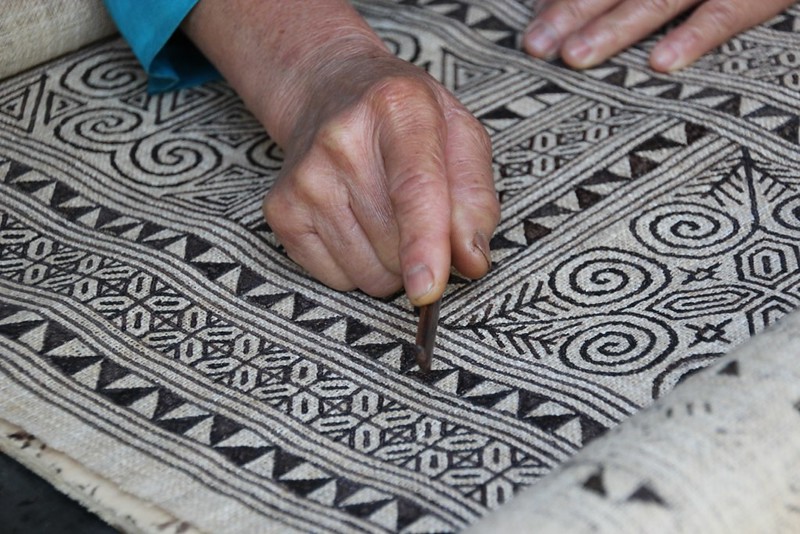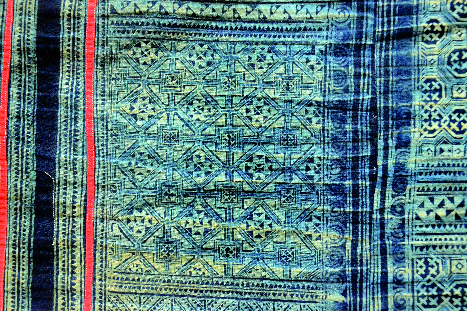On a piece of washed and beaten fabric, skillful Hmong artisans draw intricate patterns with a pencil. Afterwards, they apply hot wax on the patterns to form a dye-resist using a tool called canting, which is made of a bamboo handle with a copper pipe spout. After soaking the fabric in natural indigo and removing the wax, the dyed areas turn deep blue while the waxed areas remain in their original color, displaying a beautiful, patterned contrast.
Vietman
Hmong Batik
With no written language, the Hmong people create intricate patterns on batik textiles, and use them as story-telling devices.
The motifs and patterns are usually inspired by the natural environment, and the fabric of choice is traditionally hemp, a crop with minimal environmental impact. Hemp can be grown and processed without chemical treatments, but gives three times as much raw fiber as cotton. The end result is a strong and durable fabric with qualities similar to linen, widely used by the Hmong for skirts, jackets, aprons, and baby carriers.





